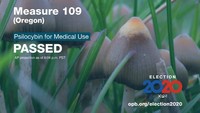In recent years research and enthusiasm for psychedelic therapies have seen rapid expansion. The question remains what the future of access to psychedelic therapy will look like. Join Jen Rusciano as we look at the different factors shaping our psychedelic future. These factors include medical access, decriminalization, and community pathways.
What will Access to Psychedelic Therapy Look Like?
Psychedelics are profound, life-changing medicines. As stigma ends these medicines move further into the mainstream. We see many studies highlighting the meaningful impact of psychedelic therapies on challenging conditions. These include eating disorders, PTSD, depression, and end of life anxiety. These tools have the potential to mend countless traumas. This is true especially in combination with other healing modalities. These include psychotherapy, somatic practice, EMDR, mindfulness, and many more. Thousands of clients and psychotherapists in the mental health field (including many in the Psychedelic Support Network) are asking one key question. “What will access to psychedelic therapy look like in the future?”
Indigenous Wisdom and Traditional Plant Medicine Ways
Psychedelics are group of substances, that both nature produces as well as laboratories. Psychedelics produce non-ordinary states of consciousness. Working with psychedelics as healing tools is a feature of indigenous cultures in every corner of the world throughout thousands of years of human history. Currently, many of the communities that are traditional knowledge keepers of plant medicine ways are in danger. The communities “are suffering, and some are on the very real verge of complete extinction, due to the multi-generational impact of systematic colonialization and genocide.”
The Chacruna Institute leads an effort called the Indigenous Reciprocity Initiative of the Americas (IRI). This calls for companies and foundations to make reparations to indigenous communities that are wisdom keepers of these healing plant medicines. Psychedelic history pre-dates Western medical models. Consequently, many academics, practitioners, and researchers are embracing indigenous knowledge and leadership as a vital component of psychedelic healing. In the US, Canada, and much of Europe, however, psychedelics exist as a part of medical applications in the field of mental health.
Follow your Curiosity
Sign up to receive our free psychedelic courses, 45 page eBook, and special offers delivered to your inbox.The High Cost of the Medical Model
So talking with many, fellow Americans about mental health care a theme emerges. You will hear access framed as a right we would benefit from. Yet this remains prohibitively expensive for a large portion of the population, even for those with insurance. In my US city, a visit to a community mental health clinic can cost as little as $60/hour. This is quite high for many in the community. Meanwhile some specialists can charge over $200/hour. Therefore, this fact has implications for access to psychedelic therapy in the US. Mental health care as a service is often difficult to access for lower income patients. Racism, economic inequality, and social perception mediates these same patients.
Uneven access to mental health care will influence access to psychedelic therapy. The model of clinical trials currently explores psychedelic therapy. This means major health organizations, academic researchers, and pharmaceutical companies are currently studying these medical models with intent to replicate. While the rollout of psychedelic-assisted therapy may look different than it does in trials, the current models under study are resource-intensive. These require access to approved sources of substances, administration sessions, medical supervision, and multi-month engagements with a therapist.
Ketamine vs Esketamine
Ketamine can serve as a test case since it is a legal psychedelic therapy that is available across the United States and Canada. Administrating ketamine helps relieve symptoms of depression and anxiety. Used as an anesthetic for over 40 years, ketamine only recently discovered novel use for its treatment of depression. It is a generic. Meaning that while effective, ketamine has no patent. So it offers limited profit incentive for pharmaceutical companies to take on the cost of a clinical trial to prove and publicize its effectiveness. Esketamine is a patented medication delivered via a nasal spray, often under the brand name Spravato.
Esketamine has been shown to be less bioavailable and less effective for treatment of depression [1]. There is one argument in favor of the clinical trials of esketamine. That is the potential that the FDA could approve this medicine for mood disorders, including depression, opening the door for insurance coverage. For now, some insurance plans can cover certain costs. For example, insurance may cover the cost of the IV or some of the doctor’s time monitoring the patient. But it does not cover the ketamine or esketamine itself. One exciting aspect of this development could mean ketamine treatment among patients facing depression related to end of life and a terminal diagnosis.
Ketamine as an Example of Access to Psychedelic Therapy
To access ketamine treatment, a person must have a consultation with a prescribing physician. This is often a psychiatrist, who assesses if the treatment matches your needs. This physician must be in good standing and registered with the Drug Enforcement Agency (DEA) for permission to dispense this substance. The patient can receive their prescription for ketamine in several forms. Ketamine can be administered in a ketamine clinic either as an intravenous infusion, a nasal dose of esketamine (Spravato), or a ketamine lozenge. Some services and states permit the lozenges to be picked up at a local pharmacy and administered by the patient at their convenience, outside of a medical clinic.
Medical oversight can shift across clinics. Some facilities have a prescribing physician on site with the patient during entire therapy sessions. Others meet the client during in-take only, while monitoring the facility regularly to ensure compliance. Therapy patterns also vary across clinics. They can range from therapy and integration sessions before and after ketamine treatments to active talk therapy while the patient is in a ketamine-induced altered state.
Decriminalize to Open Access to Psychedelic Therapy
Decriminalization efforts have taken hold across the United States. So cities including Denver, Santa Cruz, Ann Arbor, and Washington, DC voted to decriminalize plant medicines. The state of Oregon voted both to decriminalize all illegal substances (Prop 110) as well as legalize the therapeutic use of psilocybin (Prop 109). The new law ordered the creation of a “state-licensed, psilocybin-assisted therapy program over the next two years”. Decriminalization of psychedelics is also being proposed in California.
Therefore, decriminalization means that people using psychedelics for healing – medically or recreationally – will face far fewer legal consequences for their use. In their recent Salon article, Johnathan Dickinson and Dmitri Mugianis highlight how there are methods outside of the medical model that can offer value in terms of healing practices and integration techniques.
“Recent localized efforts to decriminalize psychedelics offer some hope that the underground and traditional practitioners can continue to work with less risk of arrest. It may even provide the opportunity for them to come up from the underground, and to act as mentors and teachers to the less experienced medical and therapeutic.” professionals, conveying a more nuanced understanding.”
Access to Plant Medicines Outside the Medical Model
It may also help to protect access to medicines outside of a medical model. For example, if a state allows possession of small quantities of psilocybin-containing mushrooms, perhaps more people will access this healing psychedelic. This in contrast to the only source being lab-developed psilocybin requiring a medical prescription. Legalizing the therapeutic use of substances, as Prop 109 did in Oregon, begs some questions. What can therapeutic designation mean for patient access? What guidelines and guardrails will therapists need to follow in order to incorporate these tools into their practice?
In Canada, non-profit TheraPsil is permitted by the government to offer psilocybin-assisted treatment to patients with a terminal diagnosis. There’s a catch though. The patient has to secure their own supply of psilocybin. On the other extreme, the Netherlands is famous for the legal sales of psilocybin-containing truffles. These have the same active ingredient as outlawed psilocybin-containing mushrooms. Dutch retreat centers can purchase their psilocybin over the counter and incorporate it into healing work.
Protecting Indigenous Sovereignty & Access
Recent decriminalization movements that follow the leadership of indigenous leaders exclude naming plants like peyote explicitly in their campaigns. This statement from the National Council of Native American Churches and the Board of the Indigenous Peyote Conservation Initiative makes the link between protection and peyote exclusion clear:
“It is extremely important that peyote be preserved for utilization by and for Indigenous peoples. Broken treaties in this land, the preciousness of native traditions, ecological threats to the medicine itself, and the importance of spiritual respect in its use makes peyote a tenuous plant to include explicitly in any decriminalization effort… Due to various anthropological causes, there is a shortage of peyote available for Indigenous practitioners of this venerable old religion, which is in fact a way of life for generations of Indian people. Indigenous people have fought for over a hundred years and continue to fight for their right to this medicinal sacrament and feel a deep sense of responsibility for the survival and care, as well as the preservation of their traditional way of worship with it.”
Community Pathways
There are many attempts to craft justice-oriented models in the field. These attempts aim to preserve access to all patients. Especially patients who are often most impacted by systems of oppression and face the most barriers in accessing affordable, culturally-rooted, trauma-informed care.
Clinics like Sage Institute in Oakland, CA and Sana Healing Collective in Chicago, IL work on sliding scales to ensure that no one is turned away for inability to pay. Treatment funds are starting to be discussed more widely. Some companies looking to subsidize the cost of care are directing a percentage of profits to patient assistance funds. Companies like Journey Colab are building in indigenous-leadership at the board level. Moreover they are redirecting one third of profits towards the people and communities that are the foundation of their work with synthetic mescaline. Non-profits like The Ancestor Project host a mutual ceremony fund to support the participation of BIPOC folks in ceremonies.
Regardless of how you connect with psychedelics, therapists, like the licensed mental health providers in the Psychedelic Support Network, are available to help integrate your experience. Community integration circles offer a safe space for people. Community integration circles help people process their own experiences to continue the healing by connecting and sharing with others. Amidst the rapid growth of this field in a medical and technology context, there are also many policy tools and traditional healing practices that are continuing to support varied responses to the question of access to psychedelic therapies in the future.
References
- Bahji, A., Vazquez, G. H., & Zarate Jr, C. A. (2020). Comparative efficacy of racemic ketamine and esketamine for depression: A systematic review and meta-analysis. Journal of affective disorders, 12473.







